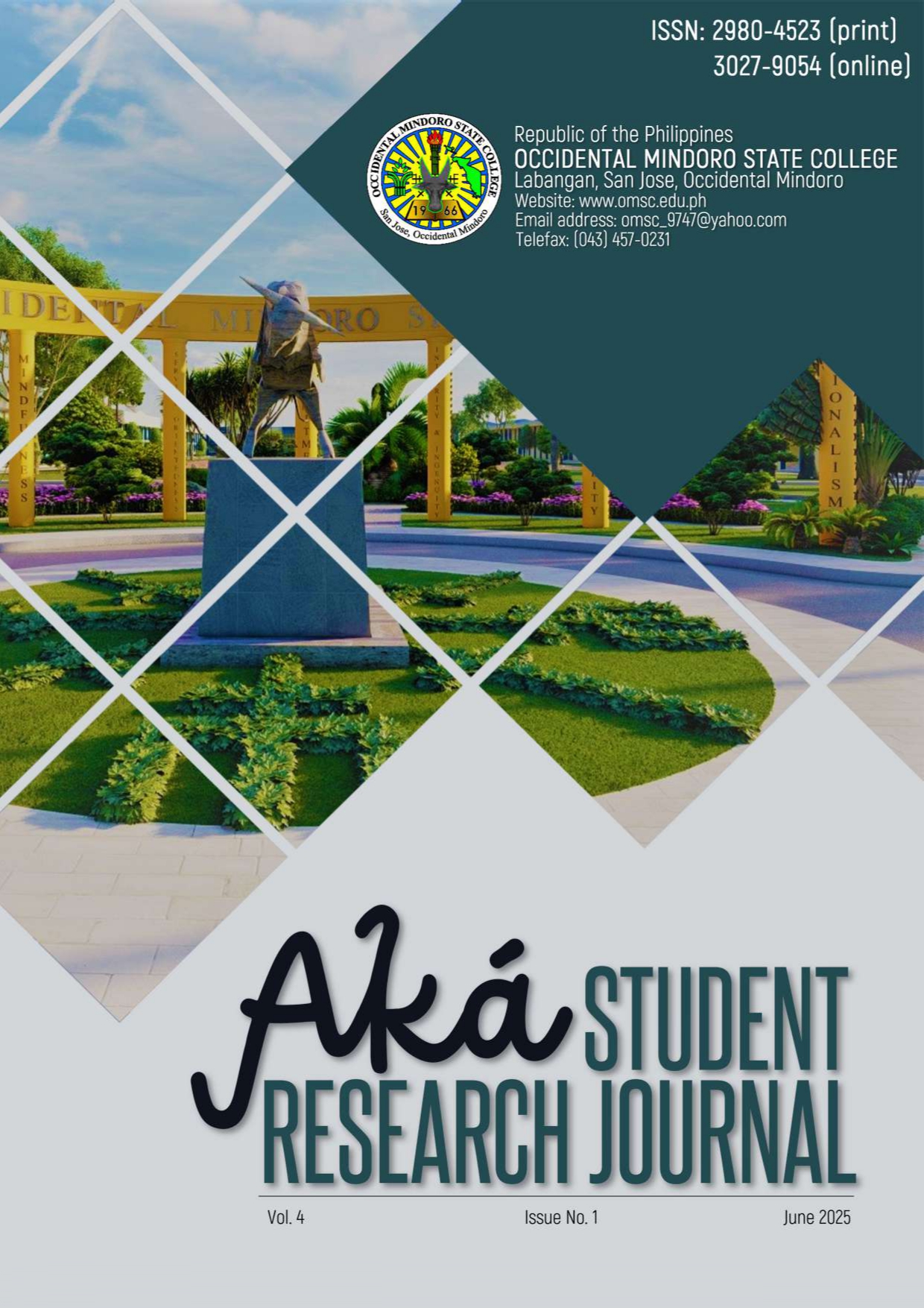Ergonomic risk assessment and safety enhancements toward sustainable rice milling operation
Keywords:
health, ergonomics, occupational safety, rice milling industry, workers' efficiency and productivityAbstract
This study investigates the physical, cognitive, and environmental demands in the rice milling industry in Occidental Mindoro. The assessment involved a sample of 30 employees across various roles, including classifiers, dispatchers, baggers, bran porters, porters, and machine operators. The study incorporated an integration of ergonomic tools, including the Cornell Musculoskeletal Discomfort Questionnaire (CMDQ), Ovako Working-Posture Analysis System (OWAS), Rapid Entire Body Assessment (REBA), and NIOSH Lifting Equation for physical-based analysis. CarMenQ and the NASA-TLX, to assess the workload and cognitive strain. The results indicated that bran porters and porters are often exposed to risks of MSDs due to the nature of work. On the other hand, baggers, dispatchers, and rice mill machine operators experienced the highest levels of cognitive workload. Findings also indicated that musculoskeletal disorders (MSDs) are significant contributors to absenteeism, with 86.76% of workers reporting such conditions. Environmental factors, such as excessive noise and humidity, have a further impact on the challenges faced by workers in the bagging and operating areas. The study focused on the implementation of systematic job rotation and the redesign of job descriptions, and recommended ergonomic measures to improve the workplace environment, with the aim to reduce the absenteeism of employees and enhanced the overall worker well-being and operational efficiency in the rice milling sector.
References
Amanullah, & Shah Fahad. (2017). Rice - Technology and Production. In InTech eBooks. https://doi.org/10.5772/64480
Astuti, R. D., Susmartini, S., & Kinanthi, A. P. (2017). Improving the work position of worker based on manual material handling in rice mill industry. AIP Conference Proceedings, 1902, 020043. https://doi.org/10.1063/1.5010660
Centers for Disease Control and Prevention. (2024). Revised NIOSH Lifting Equation. Ergonomics and Musculoskeletal Disorders. Centers for Disease Control and Prevention. https://www.cdc.gov/niosh/ergonomics/about/RNLE.html
de Oliveira Sato, T., & Cote Gil Coury, H. J. (2009). Evaluation of musculoskeletal health outcomes in the context of job rotation and multifunctional jobs. Applied Ergonomics, 40(4), 707–712. https://doi.org/10.1016/j.apergo.2008.06.005
Maulana Rosyidi, Auditya Purwandini Sutarto, & Nailul Izzah. (2023). Addressing Ergonomics in Paddy Milling: Insights from RULA, Nordic Body Map, and Anthropometry. Qomaruna, 1(1), 1–14. https://doi.org/10.62048/qjms.v1i1.21
Mehta, R. K. (2016). Integrating Physical and Cognitive Ergonomics. IIE Transactions on Occupational Ergonomics and Human Factors, 4(2-3), 83–87. https://doi.org/10.1080/21577323.2016.1207475
Mlekus, L., & Maier, G. W. (2021). More Hype Than Substance? A Meta-Analysis on Job and Task Rotation. Frontiers in Psychology, 12(12). https://doi.org/10.3389/fpsyg.2021.633530
Moradpour, Z., Jafari, M. J., Dehghan, S. F., Jalali, M., & Hesam, G. (2024). Heat stress, thermal comfort and control strategy in a warm-humid workplace. International Journal of Biometeorology, 68(12), 2507–2514. https://doi.org/10.1007/s00484-024-02760-z
Occupational Safety and Health Administration. (2002). Temporary Worker Initiative Noise Exposure and Hearing Conservation. U.S. Department of Labor. https://www.osha.gov/sites/default/files/publications/OSHA3953.pdf
Ojukwu, C. P., Anyanwu, G. E., Nwabueze, A. C., Anekwu, E. M., & Chukwu, S. C. (2017). Prevalence and associated factors of work related musculoskeletal disorders among commercial milling machine operators in South-Eastern Nigerian markets. Work, 58(4), 473–480. https://doi.org/10.3233/wor-17264
Padula, R. S., Comper, M. L. C., Sparer, E. H., & Dennerlein, J. T. (2016). Job rotation designed to prevent musculoskeletal disorders and control risk in manufacturing industries: A systematic review. Applied Ergonomics, 58, 386–397. https://doi.org/10.1016/j.apergo.2016.07.018
Philippine Rice Research Institute - Data Analytics Center. (2023). State of the Rice Sector in Occidental Mindoro. Philrice.gov.ph. https://www.philrice.gov.ph/ricelytics/main/province/51
Reiman, A., Kaivo-Oja, J., Parviainen, E., Takala, E., & Lauraeus, T. (2021). Human factors and ergonomics in manufacturing in the industry 4.0 context – A scoping review. Technology in Society, 65, 101572. https://doi.org/10.1016/j.techsoc.2021.101572
Rezvanizadeh, M., Mohammad-Ghasemi, M., Soltanzadeh, A., & Sadeghi-Yarandi, M. (2023). Development of a novel ergonomic index assessment in the workplace based on physical, cognitive, and environmental components. Work, 75(3), 1071–1086. https://doi.org/10.3233/wor-220335
Shiddiqy, I. A., Bisnis, D., & Semarang, J. (2023). Benefits Of Job Rotation: Systematic Literature Review (SLR). Jurnal Manuhara : Pusat Penelitian Ilmu Manajemen Dan Bisnis, 2(1), 144–151. https://doi.org/10.61132/manuhara.v2i1.440
Silva, D. R., De Jesus Laurenço, A., Galvão, J. Q., De Oliveira Lopes, M. E., De Oliveira Barros, Y., Araújo, C. a. P., Da Silva, J. V., Calazans, M. L., Silva, W. S. L., Gomes, E. M., & De Paula, J. S. (2024). Impact of ergonomics on workers’ performance and health. International Journal of Advanced Engineering Research and Science, 11(10), 44–58. https://doi.org/10.22161/ijaers.1110.5
The National Institute for Occupational Safety and Health (NIOSH). (2007). Ergonomic guidelines for manual material handling. Centers for Disease Control and Prevention . (2007). https://doi.org/10.26616/nioshpub2007131
World Health Organization. (2022). Musculoskeletal health. World Health Organization: WHO. https://www.who.int/news-room/fact-sheets/detail/musculoskeletal-conditions

Downloads
Published
Issue
Section
License
Copyright (c) 2025 Jazel Monterola, John Mark C. Uminga, Jenel C. Ituriaga (Author)

This work is licensed under a Creative Commons Attribution-NonCommercial 4.0 International License.

